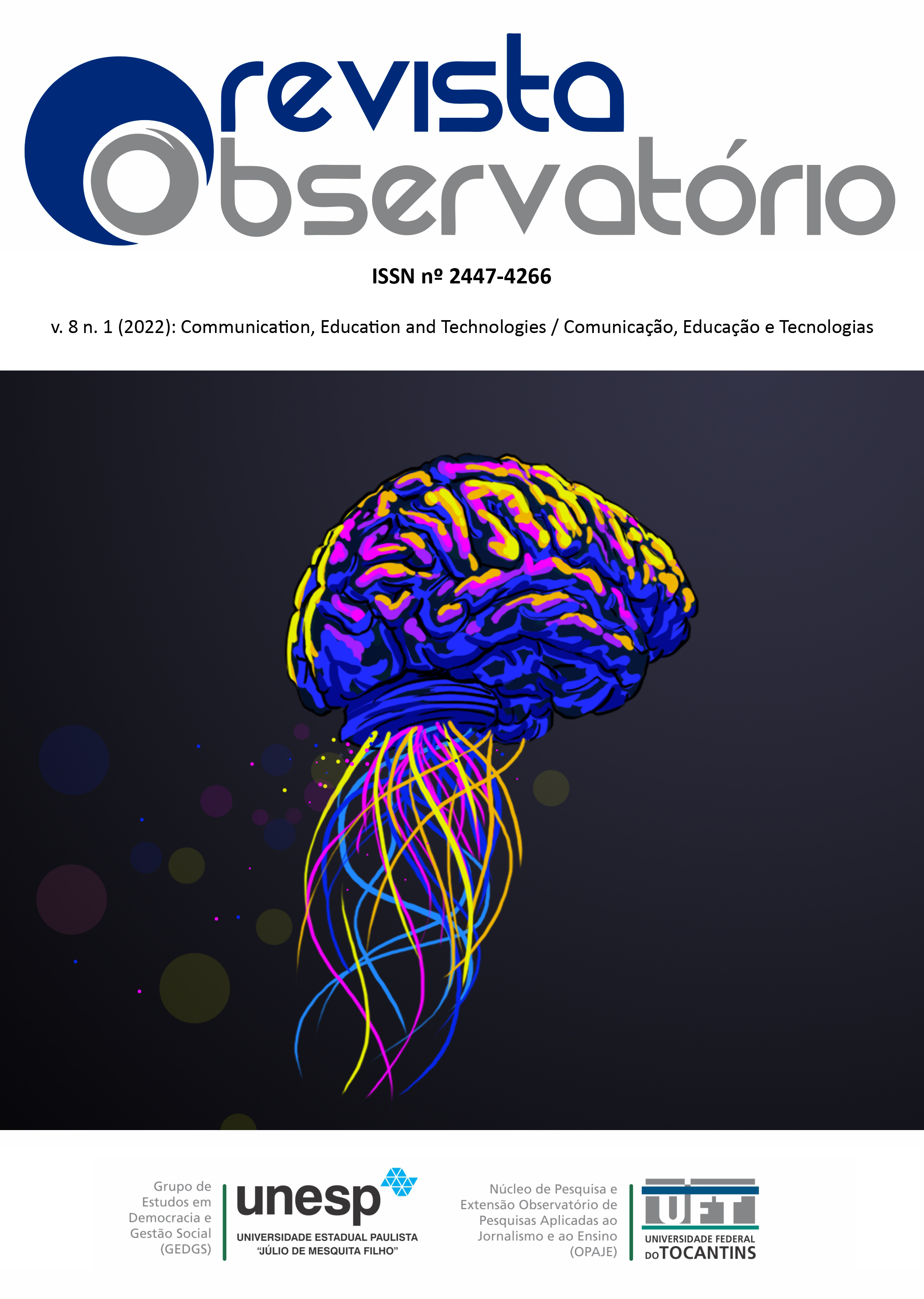GAMIFICATION AS AN INSTRUMENT FOR ENHANCING THE ENGAGEMENT ON #TEUFUTURO PROGRAM
DOI:
https://doi.org/10.20873/uft.2447-4266.2022v8n1a6ptKeywords:
Gamification, High School, EngagementAbstract
Current generations of students are increasingly influenced by digital culture, technology, and games. However, educational institutions still cannot align this connection that young people have with technology with a teaching method that can engage the student in learning. Thus, gamification emerges as a means of stimulating more active participation of students in classrooms. Therefore, the objective of this study is to verify the effectiveness of gamification in increasing engagement in students participating in the IMED #TeuFuturo program. This is qualitative research carried out through a focus group, collecting data through audio and video recording, with seven 12th grade high school students who were part of the program. The analysis of the obtained data made it possible to observe that gamification had a positive impact on the students' engagement.
Downloads
References
BARDIN, L. (2010). Análise de conteúdo. 4. ed. Lisboa: Edições 70.
CARLSON, S. (2005). The Net Generation Goes to College. The chronicle of higher education.
CRAWFORD, C. (1984). The art of computer game design. Berkeley: McGraw-Hill/Osborne Media.
DETERDING, S., DIXON, D., KHALED, R. & NACKE, L. (2011). From game design elements to gamefulness: defining gamification. Proceedings of the 15th International Academic MindTrek Conference: Envisioning Future Media Environments. Nova York: ACM.
JUUL, J. (2001). The repeatedly lost art of studying games. The Internacional Journal of Computer Game Research. v. 1.
LEPPER, M. R. & Cordova, D. I. (1992). Motivation and emotion. v. 16, n. 3, p. 187-208.
MINAYO, M. C. de S. (Org.). (2001). Pesquisa social. Teoria, método e criatividade. 18. ed. Petrópolis: Vozes.
PEROSA, C. T. & PEDRO, E. N. R. (2009). Perspectivas de jovens universitários da região norte de Rio Grande do Sul em relação a paternidade. Rev. Esc. Enf. USP. v. 43, n. 2, p. 300-306.
PRENSKY, M. (2001). Nativos digitais, imigrantes digitais. Available at: http://www.colegiongeracao.com.br/novageracao/2_intencoes/nativos.pdf. Accessed on: 25 May 2020.
RICE, J. W. (2007). Assessing Higher Order Thinking in Video Games. Journal of Technology and Teacher Education. v. 15, n. 1, p. 87-100.
SHEAHAN, P. (2005). Thriving and surviving with generation y at work. Hardie Grants Books.
VAN ECK, R. (2006). Aprendizagem digital baseada em jogos: não são apenas os nativos digitais que estão inquietos. Educause Review, v. 41, n. 2, mar./abr. 2006, p. 16-30. Available at: https://er.educause.edu/articles/2006/1/digital-gamebased-learning-its-not-just-the-digital-natives-who-are-restless. Accessed on: 25 May 2020.
Who Are Restless. (2006). Educause Review. v. 41, n. 2, mar./abr. 2006.
ZICHERMANN, G. & CUNNINGHAM, C. (2011). Gamification by design: Implementing Game Mechanics in Web and Mobile Apps. Sebastopol: O'Reilly Media.
Published
Versions
- 2022-10-12 (2)
- 2022-02-01 (1)
How to Cite
Issue
Section
License
Copyright (c) 2022 Observatory Journal

This work is licensed under a Creative Commons Attribution-NonCommercial 4.0 International License.
[PT] Autores que publicam nesta revista concordam com os seguintes termos:
1. Autores mantém os direitos autorais e concedem à revista, sem pagamento, o direito de primeira publicação, com o trabalho simultaneamente licenciado sob a Creative Commons Attribution License (CC BY-NC 4.0), permitindo o compartilhamento do trabalho com reconhecimento da autoria do trabalho e publicação inicial nesta revista.
Leia todos os termos dos direitos autorais aqui.

